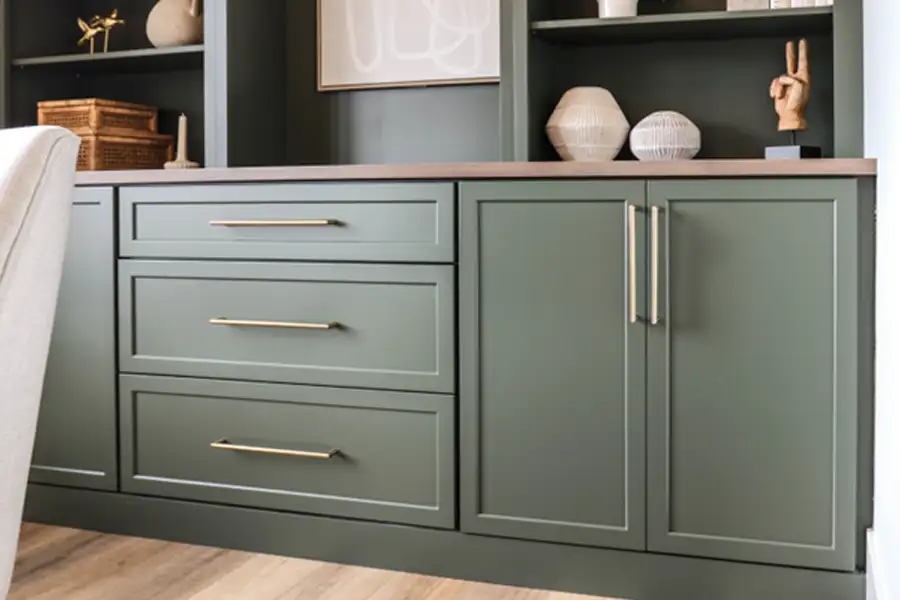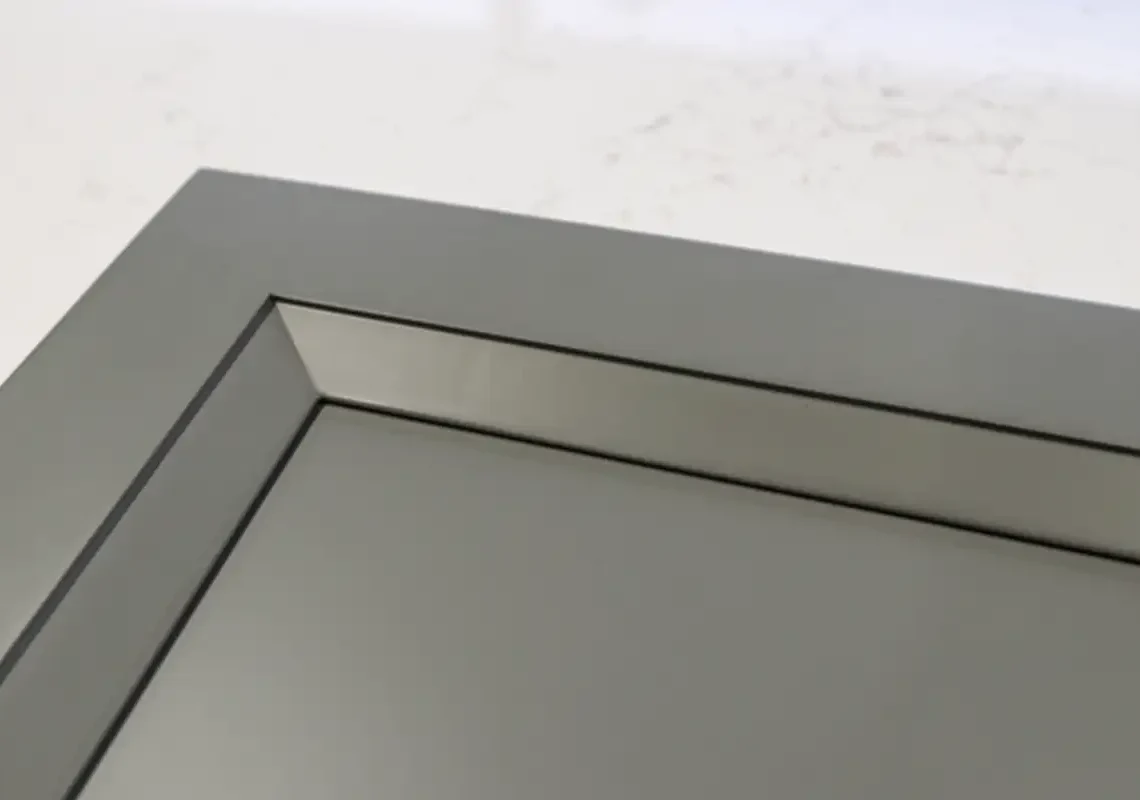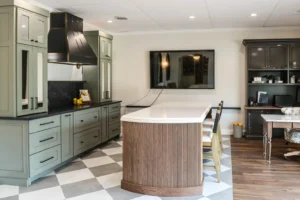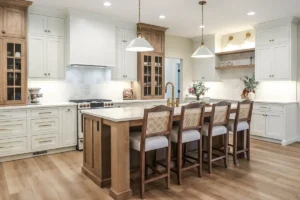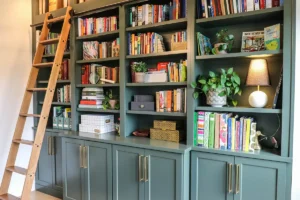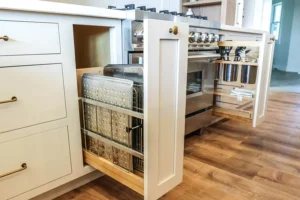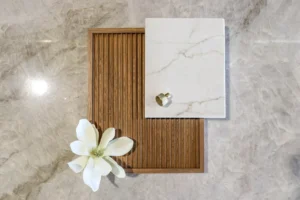Between overlays, door syles, edge profiles, and finishes, there’s a lot more to cabinetry than you might think! For those that have never ordered custom cabinetry before, it may come as a surprise at how many different design decisions there are. Unless you’re well-versed in the cabinet industry, there’s a lot of details that may go beyond common knowledge, so it’s not uncommon for designers to go through a few explanations of certain cabinet features during design meetings. If you want to be better prepared for some of the language you’ll hear when planning for your new cabinetry, that’s what we will be defining here. While you don’t need to be an expert per se, it is good to be familiar with certain design elements so that you can make informed decisions about the look of your cabinetry. Read on as we walk through some common questions and answers so that you can ensure you are prepped for that design meeting.
What are the differences between cabinet overlays?

Cabinet overlay refers to how much of the cabinet frame is covered by the door/drawer fronts. In some overlays, you can see the full cabinet frame whereas in others you won’t see any of it. The three main categories are full overlay, partial overlay, and inset. In full overlay cabinetry, the door and drawer fronts extend overtop of the frames, fully covering them. In partial overlay, just like it sounds, the doors and drawer fronts partially lay over the frames, usually about ½”, so that some of the frame is still visible. For inset cabinetry, the doors and drawers are built to sit within the frames which are fully visible, but everything sits flush.
As far as which type of overlay is right for you, consider both the style/appearance as well as the price. Because each overlay requires different ways of mounting the doors, there is a price difference to be aware of. Typically inset cabinetry comes with a slightly higher cost, however, many still opt for its clean and modern look. No matter which option you decide on, just make sure you know what you’re getting as the overlay can change the appearance of your cabinetry as well as potentially affect the price.
What is the difference between slab, flat panel, and raised panel door style?
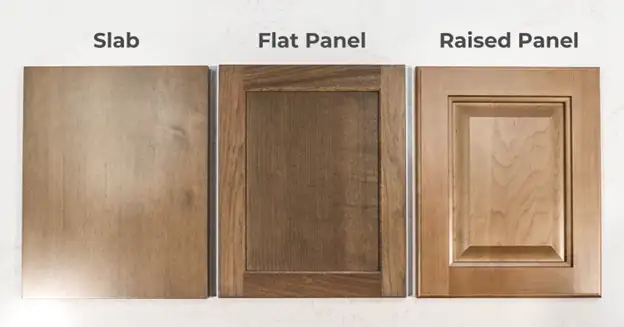
When it comes to door styles, there are several details to pay attention to when choosing cabinetry. Start by focusing on the door panel style, of which there are three main categories: slab, flat panel, and raised panel. A slab door is flat all the way across, with no frame or panel, simply a flat slab. Flat panel cabinetry refers to doors that have a frame around the edge, but the inner portion of the door is flat. Lastly, raised panel cabinets also have a frame around the edge, but the inner portion of the cabinet door is also raised to some extent. Within these three categories are variations of each, but typically you start by defining which panel style you prefer. Slab cabinets are sleek and minimalistic, raised panel are often seen as more traditional, and flat panel are probably the most common modern choice. Again, the door style you choose will speak to the overall look of your cabinets, so view some finished kitchens with the different options to see which one speaks to you.
What are edge profiles?


The next detail to pay attention to relating to cabinet door styles is the edge profile. The outer edge profile refers to the outside edge of the door while the inner profile refers to where the panel meets the inside of the frame. Similar to how there are different styles and shapes of crown molding, for example, there are multiple styles and shapes of edge profiles to choose from. Some are very simple and minimal while others are more intricate and decorative. While edge profiles may seem like a small detail, it’s going to be on each and every door, so it’s best to thumb through some sample doors to find the ones that add the right amount of personality to your cabinetry.
What is the difference between 1-piece and 5-piece drawer fronts?

The difference between 1-piece and 5-piece drawers has to do with the construction of the drawer front and whether its going to be made out of one piece of wood, also known as “slab” drawers, or a 5-piece construction, also know as “framed.” While you’re choosing all the design details for your cabinet doors, it’s not uncommon for the drawer fronts to look a little different from the door fronts. Essentially, just because you have paneled or framed doors doesn’t mean you have to have framed drawers. Because drawer fronts tend to have slimmer dimensions, you might see 1-piece/slab drawers used in place of 5-piece/framed drawers simply because the dimensions don’t allow for a whole frame without taking up the whole panel. If the dimensions do allow for either option, you can choose to either match the drawers to the doors or mix it up. Even within the same kitchen design, you might see both 1-piece and 5-piece drawers used in certain circumstances. If you’re not sure which option to choose, feel free to ask your designer for their input!
What do I need to know about the types of cabinetry finishes?
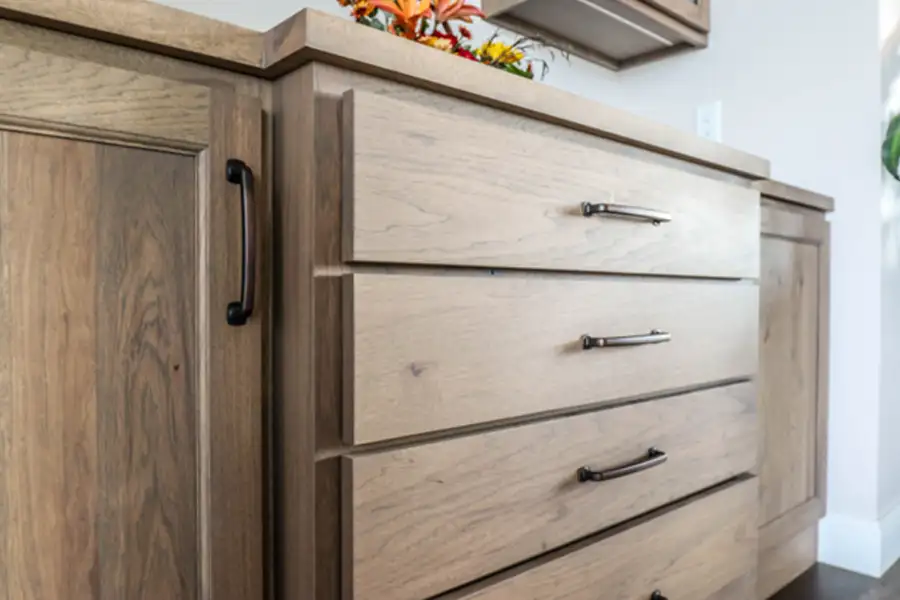
Everything we’ve already touched on has related to the construction of the cabinetry, so now it’s time to talk finishes. You probably know the difference between paint versus stain- paint being an opaque color while stain is more diluted and exposes the wood grain. With custom cabinetry, you have countless choices of any paint color imaginable or even a custom stain match. Going beyond paints and stains, you have glazes. A glaze would be an additional layer added on top of a paint or a stain to add a little something extra to the look. There are different types of glazes as well as application techniques, so applying a glaze is essentially a work of art in itself and can add an extra layer of visual texture to your cabinetry.
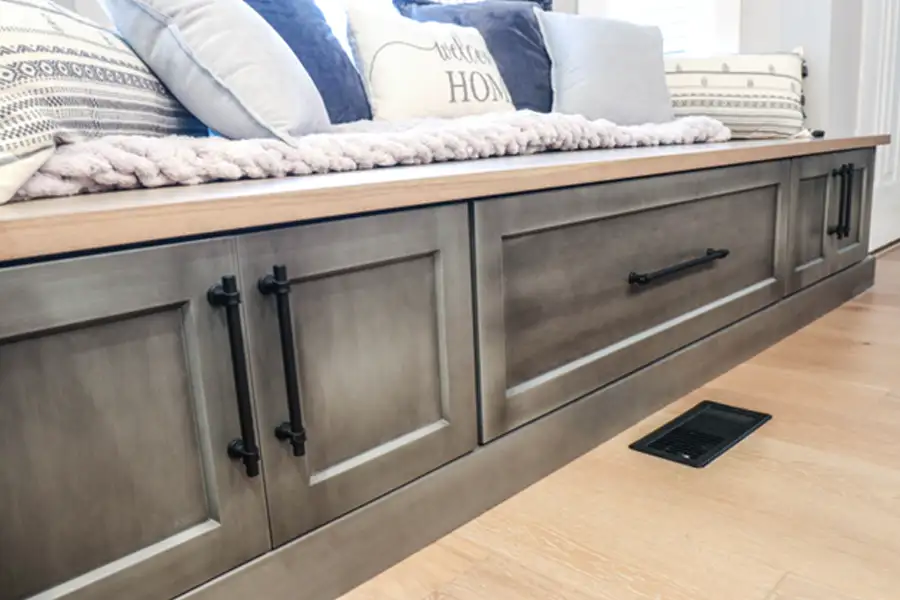
The last term to be aware of regarding cabinet finishes is the sheen. Sheen refers to how glossy or matte the topcoat of your cabinetry is and applies to both painted and stained cabinetry. Lower sheens will be more matte with little to no shine while higher sheens will reflect more light giving off a glossier finish. Most cabinetry falls somewhere in the middle, so feel free to opt for the standard sheen unless you have a specific personal preference and/or are going for a custom match.

While all these decisions can seem overwhelming, the beauty of working with us at Gravel Lane Design is that you have a designer at your fingertips to help you with all of them! We are happy to walk you through all the different options and make suggestions to fit your style and budget. Our design team has plenty of experience and are well-versed in all of the cabinet terminology, so feel free to lean on their advice as much as you prefer.
If you’re looking to set up a design meeting to talk about your custom cabinetry project, feel free to contact us so we can get you paired up with one of our designers!
